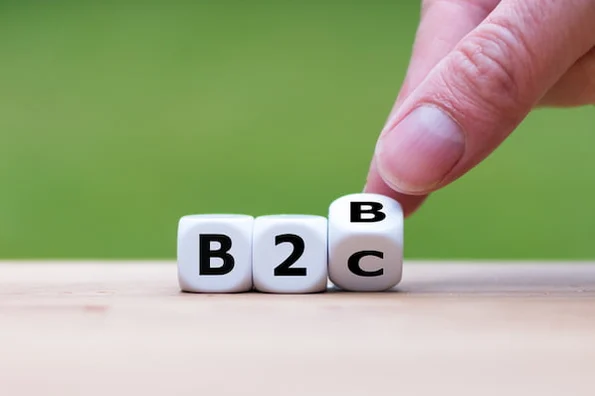Influencer marketing has transformed how brands connect with their audience. While it’s widely used in B2C (Business-to-Consumer) marketing, B2B (Business-to-Business) influencer marketing is gaining traction. But what sets them apart? Let’s explore the key differences between B2B vs. B2C influencer marketing and why both are vital for business success.
Audience Targeting: Niche vs. Mass Appeal
In B2B influencer marketing, the focus is on niche, specialized audiences. These audiences are often industry-specific and consist of decision-makers, such as CEOs, CMOs, or IT managers. B2B marketing influencers are chosen for their expertise, thought leadership, and ability to influence purchasing decisions in a particular industry.
In contrast, B2C influencer marketing targets a broader, more general audience. B2C influencers often appeal to lifestyle, fashion, or entertainment niches, speaking directly to consumers who make personal purchasing decisions.
Content Style: Educational vs. Entertaining
Content in influencer marketing for B2B tends to be more educational and value-driven. B2B influencers share in-depth industry insights, white papers, or case studies. Their role is to build trust by showcasing thought leadership and helping businesses make informed purchasing decisions.
B2C influencers, on the other hand, focus on entertaining, relatable content. Their goal is to create brand awareness through engaging visuals, tutorials, and reviews that are easy for a large audience to digest.
Relationship Duration: Long-Term vs. Short-Term
B2B influencer relationships are typically long-term. This is because B2B sales cycles are longer, and businesses often require multiple touchpoints before making a decision. Influencers in influencer marketing in B2B are seen as partners in shaping long-term strategies and establishing a trusted voice in the industry.
B2C influencer relationships, however, are often campaign-based and shorter. Brands collaborate with influencers for specific product launches or seasonal promotions.
Platforms Used: LinkedIn vs. Instagram
The choice of platform also sets B2B influencer marketing apart from B2C. For B2B, platforms like LinkedIn, Twitter, and even industry-specific forums are the go-to. These platforms allow B2B marketing influencers to engage with professionals and thought leaders.
In B2C, influencers mainly thrive on platforms like Instagram, TikTok, and YouTube, where visuals, trends, and quick engagements dominate.
Metrics: Lead Generation vs. Engagement
Measuring success in B2B influencer marketing focuses on lead generation, conversions, and long-term partnerships. B2B businesses track metrics such as website traffic, quality of leads, and sales pipeline growth.
In B2C, metrics like engagement rates, follower growth, and brand awareness are more important. B2C brands aim to generate a buzz and increase visibility in a shorter timeframe.
Tools and Platforms
In B2B, the use of a B2B influencer marketing platform helps companies find industry-specific influencers and track performance. These platforms provide deeper analytics to measure how influencers contribute to the sales funnel. B2C brands often use platforms designed for rapid reach and engagement analysis, focusing more on visibility and audience interaction.
Read more : – What Is Influencer Marketing: A Strategy Guide for 2024
Conclusion
Both B2B influencer marketing and B2C influencer marketing have their own strengths and challenges. B2B focuses on building trust and long-term relationships through niche expertise, while B2C thrives on mass appeal and emotional engagement.
Understanding these differences can help businesses effectively tailor their influencer marketing strategies, no matter the audience they target.





